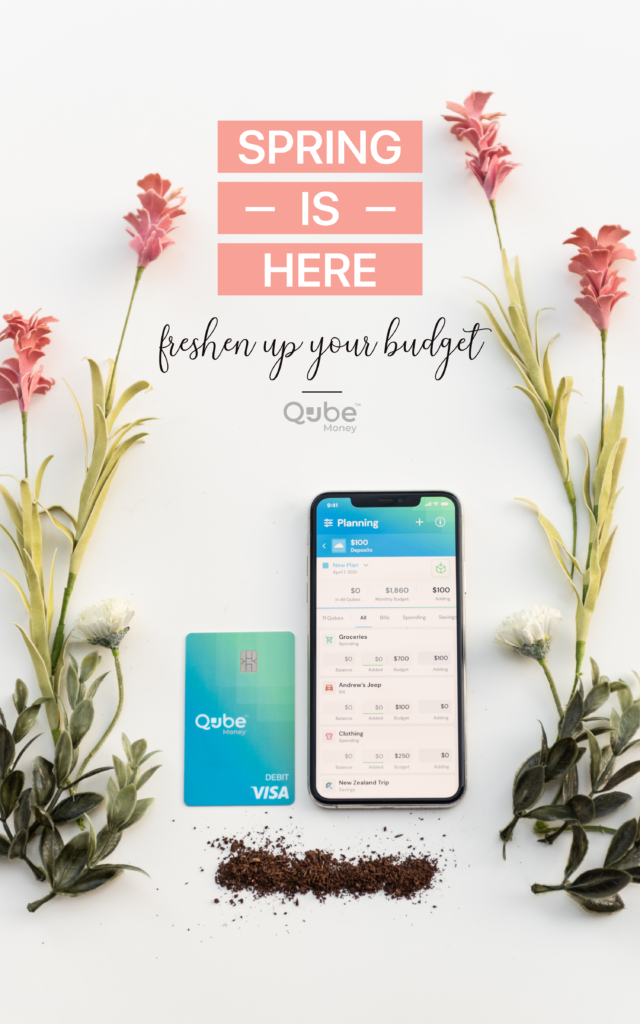With several ways to answer the question, “how to create a good budget”, each method may not be applicable to you.
But which method can you stick with like melted cheese sticks to macaroni? Yup, that’s exactly how I want you to feel about your budget. Sticking with a budget means you’re more likely to hit financial goals, pay down debt, and be more mindful of your spending.
Money can be a source of stress, especially if you’re vague about how you manage it. In fact, 36% of Americans report losing sleep over money, according to a study by Bankrate. What if by simply writing down your income and expenses you could reduce stress and regain financial control?
This basic step-by-step guide will give you the budgeting tools and budgeting tips you need to learn how to create a good budget.
Step 1: Budget by paycheck or monthly
A good budget primarily measures two things with your money: what amount is coming in and what amount is going out. Usually, this is measured in monthly increments, but you may want to budget by paycheck or every two weeks.
The benefit of budgeting per paycheck means you have a smaller amount of money to budget and on a smaller timeframe. This could help you manage money more consistently. Monthly budgeting can help you see how money is spent throughout the month. If this is your first time budgeting, you may want to do a mid-month check-in to see where you’re at.
Action item: Set a reminder to budget
Set a recurring reminder in your calendar to open up your budget. I suggest doing this on the last day of each month. You can review the past month’s transactions and forecast for the upcoming month.
Step 2: Break down spending into subcategories
Budgets can be broad or granular depending on how you like to slice up your spending. I’m generally detailed with how I break down my budget. Clothes get its own category. Netflix has its own category. Likewise for haircuts, restaurants, and organic Colombian coffee. Kidding about the coffee.
If multiple categories sound overwhelming, break down your spending into four main subcategories: fixed, fun, fudge, and future. If you’re brand new to budgeting, you may want to go this route first.
Fixed budgeted items
Fixed budgeted items include any expenses that are typically the same amount each month and are deemed necessary. This would include rent or mortgage payment, utilities, internet, groceries, insurance, gas, and a cell phone plan. This doesn’t include your obsession with Dunkin Donuts or the copious amounts of streaming television subscriptions you might have.
Fun budgeted items
Here is where you include Dunkin Donuts, Disney+, Amazon Prime, and all the fun stuff you like to spend your money on. Each of these things could have their own line item or you could lump them into the fun subcategory. You can easily get carried away with this category if you’re not careful so it’s important to track it each month.
Fudge budgeted items
The fudge category is reserved for all those miscellaneous expenses that you may forget about within a month. Fudge is in reference to Ralphie’s famous tire-changing moment from “A Christmas Story.” Mistakes happen. The fudge category is a small amount of money you set aside in your budget to make up for those mistakes.
Future budgeted items
This is my favorite subcategory in my budget. Want to save for a Hawaiian vacation? Ready to save for a down payment on a house? That’s what the future category is for. Set aside a portion of your income for your wildest savings goals. Then record those savings amounts in the future subcategory.
Action item: Determine your budget categories
Reflect on your typical spending and then break out expenses into budget categories. They don’t necessarily have to be the 4 F’s as mentioned above. Make sure each expense has a home in your budget.
Step 3: Create a good budget by auditing your spending
Now that you know how often you’re going to budget and what categories you need, you’ll need to forecast how much you should set aside for each category. If your current method of forecasting is simply verifying you still have money in your checking account before you buy something, this next step is for you.
Log in to your primary financial account in which you make transactions. This could be a credit card account or a checking account. Next, you’re going to record and categorize your spending over the last three months. Then, you’ll take an average across those three months to get an accurate picture of how much you spend in each category.
For example, you might have spent $425 in restaurants in April, $300 in March, and $350 in February. The average amount of restaurant spending is roughly $358 per month. Realistically, you could forecast this amount in your budget. You could also make a plan to reduce this amount and put the savings towards a goal.
Action item: Complete a spending audit
Set aside at least an hour this week to complete an audit spending. You’ll need the last three months of transactions, plus a way to track it all. Use a sheet of paper or a spreadsheet to record your findings. Then determine if you want to reduce the amount you spend in each category or keep your spending the same.
Step 4: Track debt inside of your budget
Debt has a place inside of your budget, too. If you have any debt it should be listed in your budget. Include your monthly debt payment for each debt. I also include the associated interest rate and outstanding balance so that I can see how much the balance has changed month over month.
When you list your debts in your budget, you’re forced to look at it. It’s true that you manage what you monitor and debt is no different. If you’re keen to tackle debt, list your debts and decide how much you can put towards the debt balance each month.
Action item: List any debt inside of your budget
If you’re unsure of how much debt you have, you can pull a free credit report at AnnualCreditReport.com. The report includes information reported by Equifax, Experian, and TransUnion. Your credit report will include any open and closed accounts that are under your name. These would include student loans, credit cards, personal loans, and mortgages.
Related: How to Eliminate Debt Without Changing Your Lifestyle
Step 5: Select your budget method
Budgeting is blissful when you figure out which method works best for you. From budgeting apps like Qube to spreadsheets to pencil and paper, there’s a method that suits any budget newb.
Budgeting apps
Cash has become digitized and so has budgeting. Budgeting apps can help you keep track of your income and expenses by automatically categorizing purchases for you. Plus, an app can notify you when you have exceeded your budget.
If you prefer the digital route, Qube automatically splits your money into separate virtual qubes. Then you can choose which qube you’re spending from. You can even get your spouse on board by sharing digital envelopes across your family.
Spreadsheets
Then there’s the trusty ol’ spreadsheet. Whether you create your own or use a template, you can set up your budget with a spreadsheet. The biggest downside to a spreadsheet is that you’ll have to manually update it each time you make a transaction.
Spreadsheets have some power though. Each time you add a transaction, you feel that expense emotionally. Do you keep adding expenses to the shopping category? Take note of how you feel. Relieved? Panicked? Those emotions can be redirected when you come up with a plan to reduce spending in certain areas.
Paper
You’re more likely to achieve your goals if you write them down, according to a study by psychology professor Dr. Gail Matthews. You could treat your budget the same way. Keep a financial journal on hand and write down your income and expenses for the month.
My brother-in-law and his wife took this method a step further by purchasing a cheap whiteboard and keeping it on their fridge. Every day when they got home from work, they would update the whiteboard with what they spent in the day. It helped them stay on track to pay down debt and stay within budget.
Related: How to Tackle Debt as a Couple
Action item: Select a good budget method
When it comes to budgeting, each method has its pros and cons. If there’s a clear winner out of this list for you, adopt it as your own and implement it for three months. The three-month buffer is enough time to help you stay consistent and improve your budgeting skills.
If all of these methods make sense and you’re unsure of which one to use, test each one individually. Then you can see which one you’re excited to work with or which one you subconsciously avoid.
Read: You Need a Budget: 6 Reasons to Start Today
Now set forth and create a good budget
When you budget, make sure each dollar has a place. This is often referred to as zero-based budgeting in which you allocate every dollar of income to a spot in your budget. Giving each dollar a name is a big difference between proactive and reactive budgeting.
Creating a good budget can help you pay off debt, save for the future, and enjoy money instead of letting it stress you out. If you’re looking for more ways how to create a good budget, one of our favorite methods is the cash envelope system.






![Everything You Need to Know About the Cash Envelope System [+ Sample Budget]](https://blog.qubemoney.com/wp-content/uploads/2020/01/1-20-20-the-cash-envelope-system-blog2-440x264.png)

